Crédito del Estado de Tamaulipas
General Servando Canales Molano was governor of Tamaulipas four times in the early 1870s including from 20 April to 6 November 1876. Canales had fought against Maximilian and the French, then joined Porfirio Díaz’ rebellion against President Lerdo de Tejada (the Plan de Tuxtepec), and remained faithful to General Díaz until the end of his days; however, this was never an obstacle for him to disobey General Díaz as often as was necessary in order to remain in power.
When Canales decided to support Díaz, he did so with a great deal of foresight. Among other things, there was the problem of how to supply money for warfare - by issuing bonds or promissory notes. So he consulted his oficial mayor, Tarquino Jiménez, regarding legal precepts, but he did not notify the State Congress nor anyone else, except his closest followers, until he found it opportune to do so. Thus, on 28 June 1876, he requested and obtained from Congress extraordinary faculties in matters of internal revenue and war, and on 15 July that same year, he again convoked the assembly of Congress for the sole purpose of signing the decree authorizing the issue of paper money. At the same time he presented them with samples of his intended paper money, already printed. The indignant members of the Sovereign Congress refused to sign, and one by one presented their arguments against it.
After calmly listening in silence to the first nine (eight plus one was a simple majority), Canales interrupted the proceedings by asking for a recess. Then, making use of his newly acquired military powers, he ordered that the nine individuals be recruited as privates at the barracks next to the town hall. As soon as they were quartered, they were forced to put on the uniform for recruits, and immediately began to march with full equipment in the burning sun. Meanwhile, in the town hall, the deputies who had not yet voted, decided openly to sign the decree that authorized the issue of notes already issued, for a total value of $50,000. It was not long before the recruited deputies asked for a hearing before the governor, now thoroughly convinced of the convenience of the decree. As soon as they were freed they signed it without delay, which meant that this decree was unanimously acceptedPeriódico Oficial, vol. I, núm. 65, 3 April 1867.
The immediate reaction of businesses in Ciudad Victoria was to close upEco de Ambos Mundos, Año Setimo, Núm. 1102, 15 August 1876.
This paper money, forced into circulation, was a very important factor in the triumph of the rebels; it was used to pay for the equipment of troops that fought in San Luis Potosí and Tamaulipas. After the final victory, it was quite difficult for Porfirio Díaz to get General Canales to have these notes withdrawn from circulation. According to some historians they continued to circulate for another two years.
There were seven denominations (12½c, 25c, 50c, $1, $5, $10 and $25).
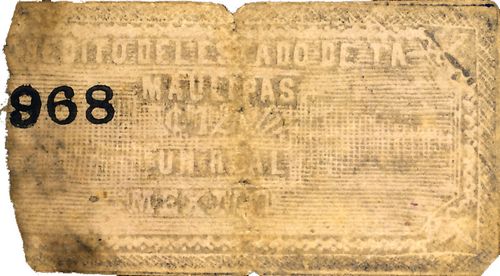 M762 12½c Crédito del Estado
M762 12½c Crédito del Estado
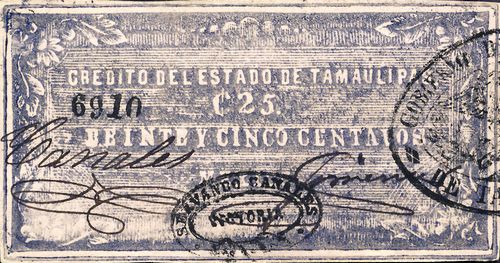 M763 25c Crédito del Estado
M763 25c Crédito del Estado
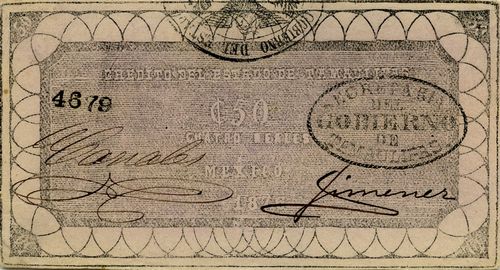
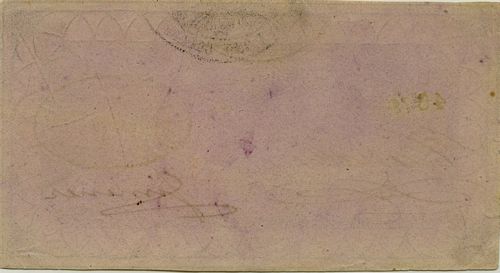 M764 50c Crédito del Estado
M764 50c Crédito del Estado
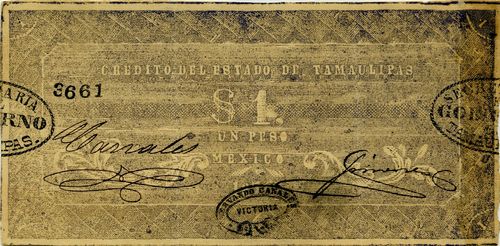
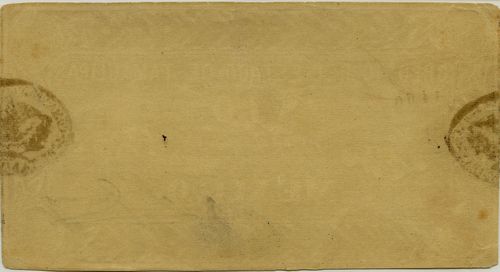 M765 $1 Crédito del Estado
M765 $1 Crédito del Estado
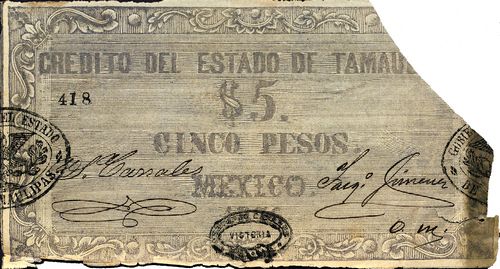 M766 $5 Crédito del Estado
M766 $5 Crédito del Estado
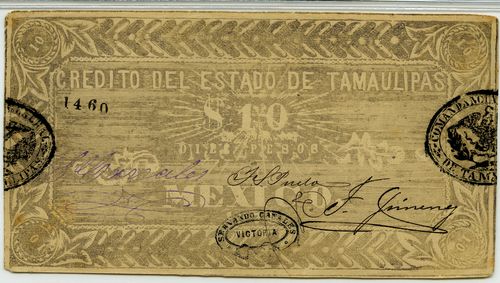
 M767 $10 Crédito del Estado
M767 $10 Crédito del Estado
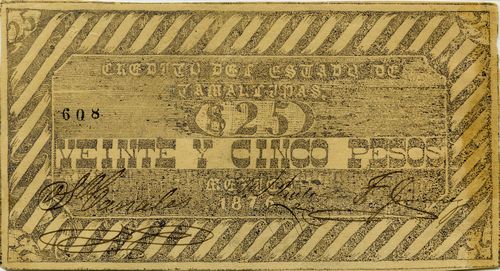
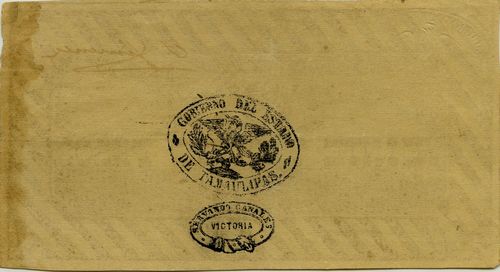 M768 $25 Crédito del Estado
M768 $25 Crédito del Estado
| to | from | total number |
total value |
||
| 12½c | includes numbers 572 to 5826 CNBanxico #12189 | ||||
| 25c | includes numbers 2496CNBanxico #6696 to 6910 | ||||
| 50c | includes numbers 101 to 5670 | ||||
| $1 | includes numbers 1091 to 6218 | ||||
| $5 | includes numbers 24 to 875CNBanxico #12194 | ||||
| $10 | includes numbers 120 to 1804 | ||||
| $25 | includes numbers 82 to 757CNBanxico #12196 | ||||
| $50,000If we multiply the value of the seven denominations by the highest known serial number (5,826 12½c, 6,910 25c, 4,972 50c, 6,218 $1, 875 $5, 1,804 $10 and 757 $25) the total is $52,499.75. Therefore either further issues were made, the serial numbering for each denomination did not start with 1, or some numbers are wrongly recorded. |
The notes have the signatures of Canales and Jiménez, with F. S. Prieto as well on the $10 and $25, and a selection of seals: "SECRETARIA DEL GOBIERNO DE TAMAULIPAS", "SERVANDO CANALES. VICTORIA" and "COMANDANCIA GENERAL DE TAMAULIPAS"
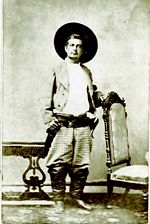 Servando Canales Molano was born in Camargo, Tamaulipas, in 1830. At the age of 16 he joined the national forces, next to his father, to fight the Americans. He joined the rebellion of Ayutla in 1854 and at the start of the French Intervention organized an army corps called the Brigada Canales and participated in the capture of Matamoros, Monterrey and other cities. President Benito Juárez ratified his appointment as Brigadier General in 1872 and in 1877 he was raised to Major General, a degree confirmed by Porfirio Díaz in 1878. In 1876, as governor of Tamaulipas, he joined in Díaz’ Plan de Tuxtepec, participating in October of the same year in the Battle of the Hacienda de las Antonias that precipitated the fate of the government of Lerdo de Tejada. He was governor several times, briefly in August 1866, from September 1870 to June 1872, from August 1872 to September 1874, from June to September 1875 and finally from April to November 1876. After his last period as governor he retired from politics and died in Matamoros in 1881. Servando Canales Molano was born in Camargo, Tamaulipas, in 1830. At the age of 16 he joined the national forces, next to his father, to fight the Americans. He joined the rebellion of Ayutla in 1854 and at the start of the French Intervention organized an army corps called the Brigada Canales and participated in the capture of Matamoros, Monterrey and other cities. President Benito Juárez ratified his appointment as Brigadier General in 1872 and in 1877 he was raised to Major General, a degree confirmed by Porfirio Díaz in 1878. In 1876, as governor of Tamaulipas, he joined in Díaz’ Plan de Tuxtepec, participating in October of the same year in the Battle of the Hacienda de las Antonias that precipitated the fate of the government of Lerdo de Tejada. He was governor several times, briefly in August 1866, from September 1870 to June 1872, from August 1872 to September 1874, from June to September 1875 and finally from April to November 1876. After his last period as governor he retired from politics and died in Matamoros in 1881. |
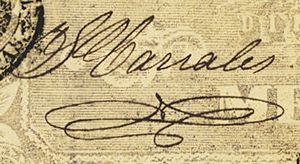 |
|
Tarquino Jiménez Arredondo was born in 1845. He was serving as oficial vista for the Tampico customs in 1878El Siglo Diez y Nueve, 14 September 1878: La Patria, 19 November 1878 and at the end of that year was appointed visitador del contraresguardo de la FronteraLa Voz de México, 19 December 1878. He died in Tula on 12 April 1885. |
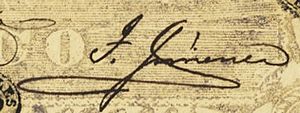 |
| F. S. Prieto |  |
Withdrawal
As stated, after Porfirio Díaz' final victory it was quite difficult to get General Canales to have these notes withdrawn from circulation. According to some historians they continued to circulate for another two years.
